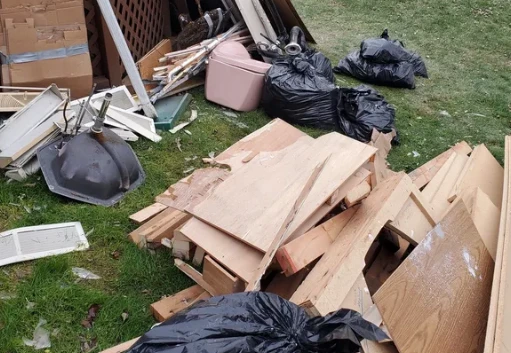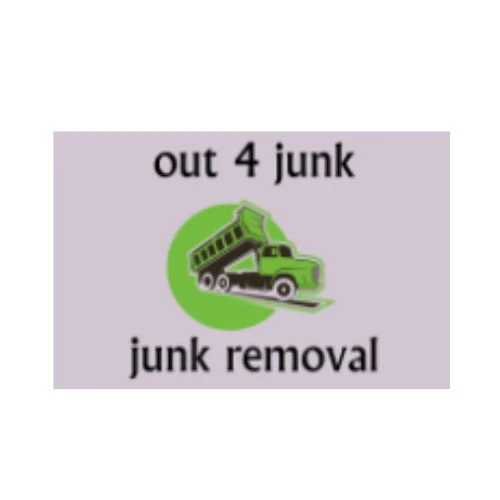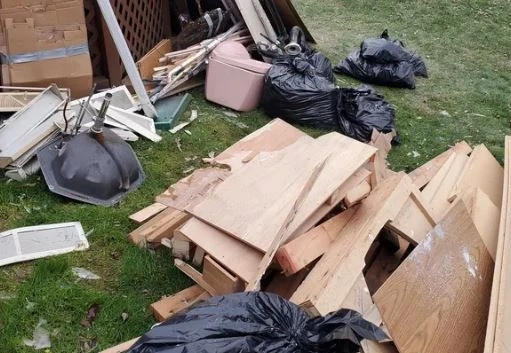Gardening is an enjoyable and rewarding hobby, but it often results in significant amounts of garden debris. Whether you're trimming hedges, pruning trees, or clearing weeds, knowing how to handle and dispose of garden debris safely is crucial for both the environment and your well-being. Proper disposal not only ensures that your garden remains neat but also helps in reducing environmental impact. Understanding the importance of proper garden debris removal is the first step in maintaining a healthy garden and ensuring responsible waste management. In this post, we’ll guide you through the process of safely managing and removing garden debris, emphasizing safety and eco-friendly practices.
1. Understanding Garden Debris: What You’re Dealing With:
Garden debris includes any material removed from your garden or lawn during regular maintenance or seasonal clean-ups. It can range from leaves and grass clippings to branches, weeds, soil, and even broken pots. Knowing exactly what you're working with is essential because different types of debris require different disposal methods. Some materials can be recycled or composted, while others may need special handling, particularly when they involve diseased plants or hazardous materials.
For effective garden debris removal, assess the types of debris in your garden before beginning the clean-up process. Categorize materials into organic (such as leaves, grass, and flowers) and inorganic (such as plastic, glass, and metal). This step ensures you're aware of what can be composted or recycled and what must be discarded differently.

2. Safety First: Personal Protection:
Before you begin handling any garden debris, it's essential to prioritize safety. Garden debris can be full of sharp objects, toxic plants, or heavy materials that can lead to injury. Here are a few steps to protect yourself:
●Wear gloves: Protective gloves will safeguard your hands from cuts, abrasions, and any harmful chemicals in the soil or on the plants.
● Wear sturdy footwear. Closed-toe shoes or boots will protect your feet from sharp objects, such as broken glass, sticks, or nails, that may be hidden in the debris.
● Eye protection: If you use tools like hedge trimmers or leaf blowers that could throw debris into your eyes, consider wearing safety glasses.
● Long sleeves and pants: Cover your arms and legs to protect against thorny plants or potentially poisonous vines and bushes.
These precautions are particularly important for garden debris removal, as mishandling certain materials or failing to protect yourself can lead to injuries or irritation.
3. Sorting and Preparing for Disposal:
Once you've gathered the necessary tools and taken safety precautions, it's time to start sorting the debris. This step is critical to ensuring that you dispose of everything properly. Sorting helps you identify what can be composted, what can be recycled, and what needs to be discarded.
●Organic debris: Leaves, grass clippings, and plant trimmings can often be composted or used as mulch. These organic materials break down naturally and add nutrients back to the soil. If you have a compost bin, you can easily dispose of most of your organic garden debris there.
●Inorganic debris: Items like plastic pots, garden tool packaging, and glass containers should be separated and recycled according to your local recycling program. These materials can often be repurposed, reducing their environmental impact.
●Hazardous materials: Diseased plants, chemical containers, and any items with sharp edges should be handled with care. They should not be composted, as they can spread pathogens. Instead, dispose of them according to your municipality's guidelines.
By sorting your debris early on, you streamline the garden debris removal process and ensure that each item is disposed of correctly, contributing to a cleaner and healthier environment.
4. Composting and Mulching: Eco-Friendly Solutions:
One of the best ways to handle garden debris is through composting and mulching. These methods are environmentally friendly, reduce landfill waste, and provide valuable organic matter for your garden.
●Composting: Composting is the natural decomposition of organic materials like leaves, grass clippings, and plant trimmings. To start composting, create a compost bin or pile in a designated area of your yard. Add layers of green materials (e.g., fresh grass clippings, vegetable scraps) and brown materials (e.g., dry leaves, straw). Be sure to turn the pile regularly to speed up decomposition. Over time, you’ll have rich, dark compost to use as fertilizer for your plants.
●Mulching: Instead of throwing away plant trimmings, you can use them as mulch around your garden beds. Mulch helps retain moisture, suppress weeds, and regulate soil temperature. You can use grass clippings, shredded leaves, or even bark from tree trimming. Just ensure that the mulch doesn’t become too thick, as it could smother your plants.
By composting or mulching your garden debris, you contribute to sustainability while reducing your need for chemical fertilizers and commercial soil additives.
5. Disposing of Large or Hazardous Debris:
Not all garden debris is easy to compost or recycle. Large branches, broken garden tools, or hazardous materials require special attention. Here's what you should do:
●Branches and tree limbs: Large branches may need to be cut into smaller pieces for easier disposal. If the debris is substantial, consider hiring a professional tree removal service. Some services offer garden debris removal specifically for large or difficult-to-dispose items.
●Hazardous waste: Diseased plants, chemical pesticides, or old plant pots containing lead-based paint should be disposed of at a designated hazardous waste facility. Check with your local municipality for guidelines on safely disposing of these items.
In some cases, it may be worthwhile to rent a dumpster or a garden debris removal service to handle particularly large clean-ups, especially if you’re dealing with a significant amount of material after a major garden renovation.
6. Hiring a Professional Garden Debris Removal Service:
For larger gardens or particularly busy gardeners, hiring a professional garden debris removal service might be the most efficient option. Professional teams have the equipment and expertise to safely and quickly clear debris from your property. They can help with everything from large tree branches to weeds and compostable materials. Before hiring a service, be sure to:
● Get quotes from different providers.
● Verify their eco-friendly disposal practice.
● Ask about any specific services related to composting or recycling garden waste.
Using a professional service ensures that all garden debris is handled appropriately, saving you time and effort while contributing to sustainable waste management.
7. Final Thoughts: Sustainable Practices Matter:
Proper handling and disposal of garden debris are essential for maintaining a healthy garden environment and minimizing your ecological footprint. By sorting, recycling, composting, and using professional services when necessary, you can manage your garden waste responsibly. In addition to improving the look of your garden, you’re also contributing to a cleaner, greener planet. Remember, when it comes to garden debris removal, a little effort goes a long way in making a significant positive impact on both your space and the environment.


